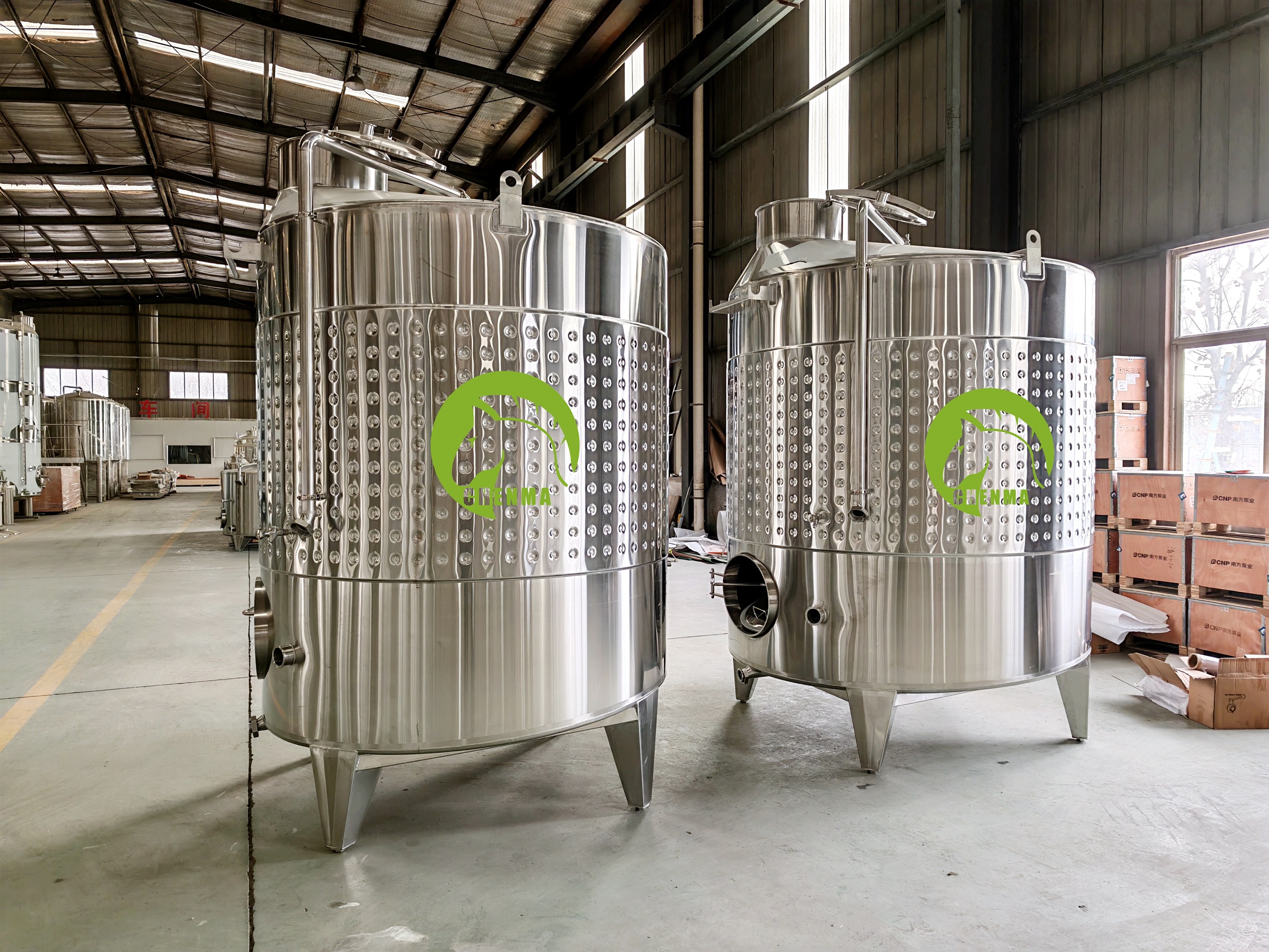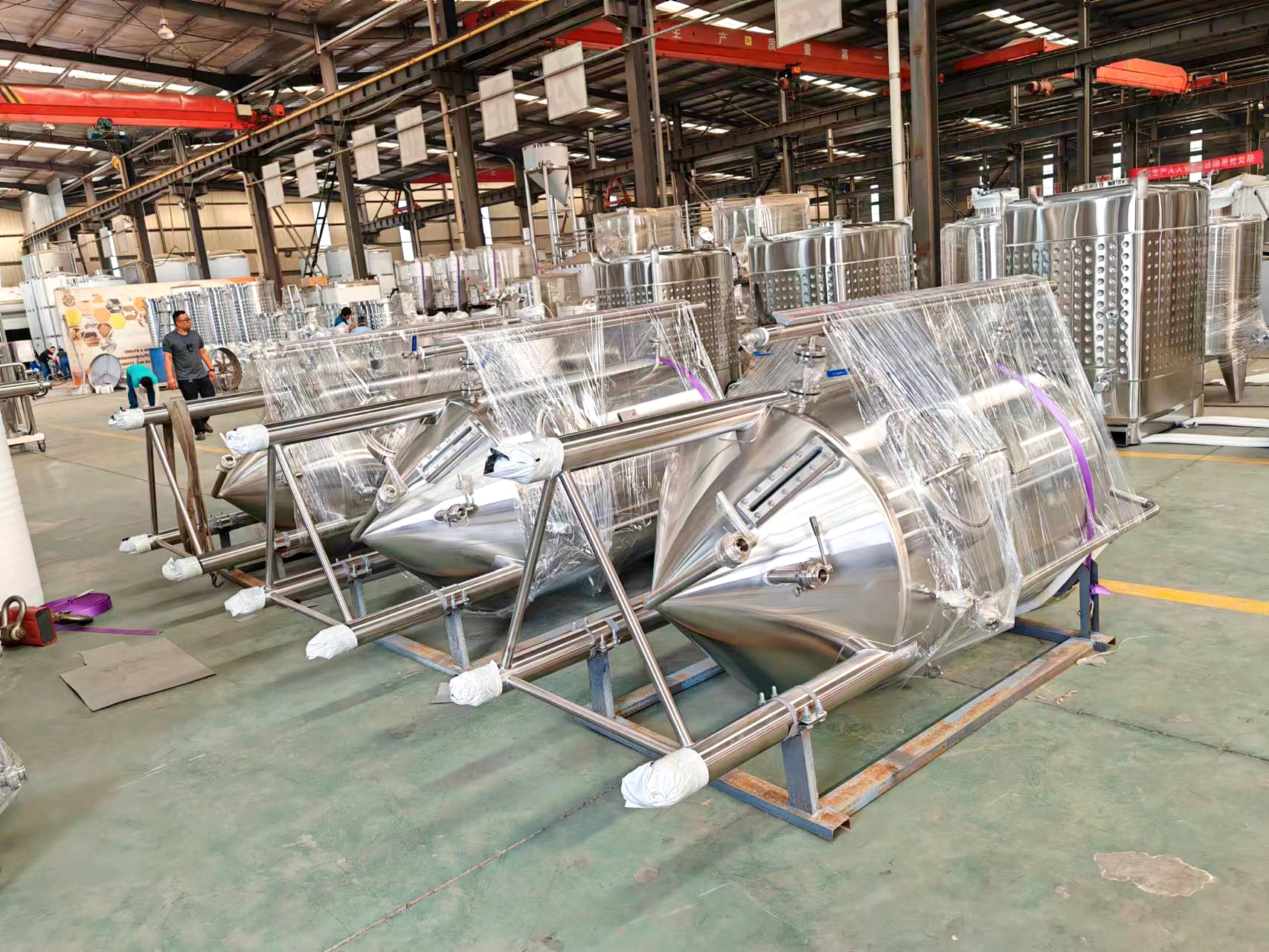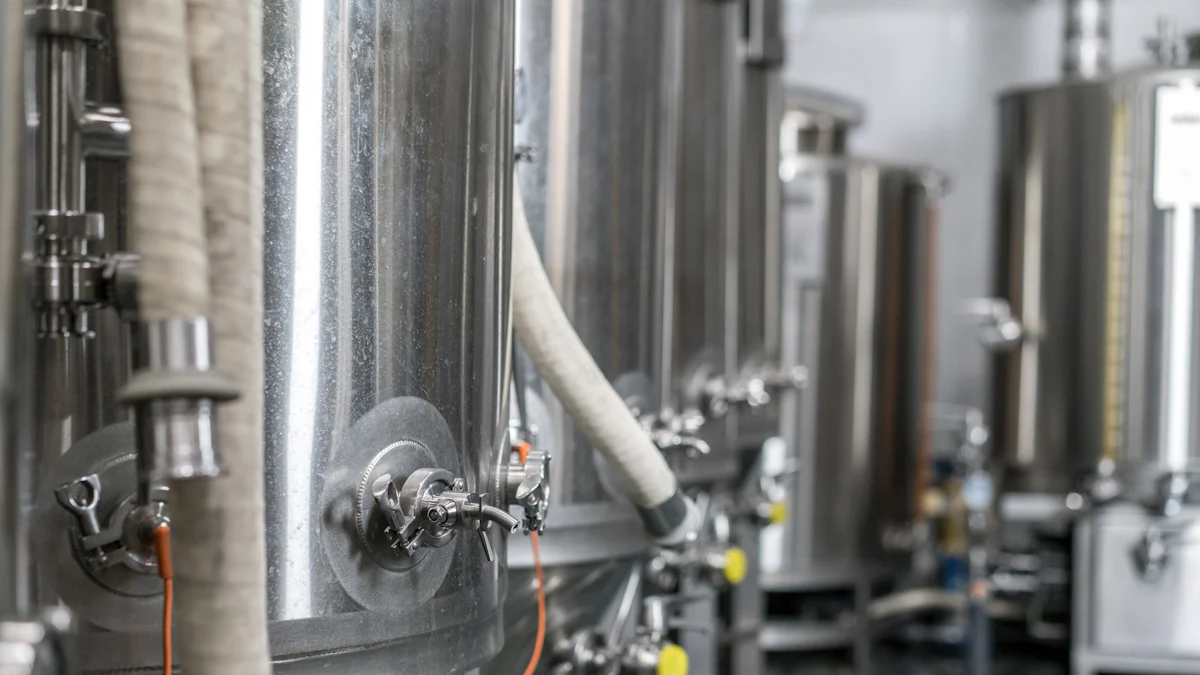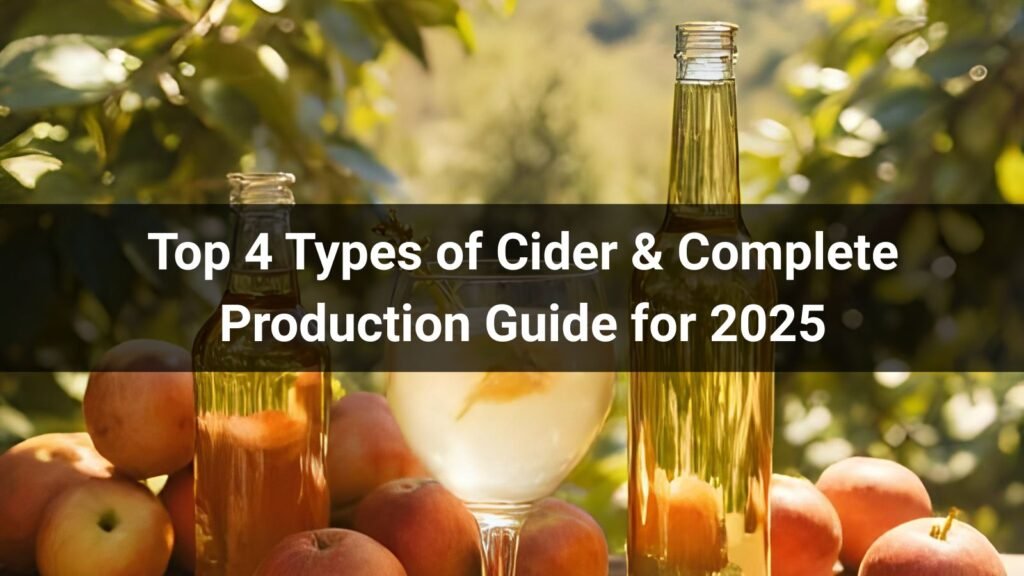
Cider production has experienced a remarkable renaissance in recent years, with craft cideries and home
brewers exploring traditional and innovative techniques. This comprehensive guide covers the four main
types of cider, optimal fermentation timelines, essential production ratios, and professional equipment
solutions. Whether you’re a commercial producer or passionate home brewer, understanding these
fundamentals will elevate your cider-making journey from apple selection to final bottling.
Table of Contents
The Four Essential Types of Cider
Understanding the different types of cider is fundamental to successful production. The four primary
categories each offer unique characteristics, production methods, and target markets:
1. Still Cider (Traditional Dry Cider)
Still cider represents the most traditional form of fermented apple beverage. This type undergoes
complete fermentation, converting most natural sugars into alcohol, resulting in a dry, crisp product
typically ranging from 4-8% ABV. Still ciders showcase the pure essence of apple varietals without
additional carbonation or sweetening agents.
Production characteristics include:
- Complete primary fermentation (10-21 days)
- No secondary carbonation process
- Natural apple flavors predominate
- Alcohol content typically 5-7% ABV
2. Sparkling Cider (Carbonated Cider)
Sparkling cider incorporates carbonation through either natural fermentation or forced carbonation
methods. This style has gained tremendous popularity in commercial markets due to its refreshing
character and broader appeal to consumers accustomed to carbonated beverages.
For commercial producers, investing in proper stainless steel cider
fermentation tanks ensures consistent carbonation levels and product quality. Professional-grade
equipment maintains precise pressure control throughout the carbonation process.
3. Sweet Cider (Residual Sugar Cider)
Sweet ciders retain natural or added sugars, creating products with noticeable sweetness balancing the
natural acidity of apples. These ciders appeal to consumers preferring less dry beverages and often
serve as gateway products for new cider enthusiasts.
Production involves controlled fermentation techniques:
- Arrested fermentation through chilling or sulfite addition
- Back-sweetening with apple juice concentrate
- Careful monitoring to prevent over-fermentation
- Sterile filtration for stability
4. Specialty Cider (Flavored and Experimental)
Specialty ciders encompass fruit additions, spice infusions, barrel-aging, and experimental techniques.
This category allows maximum creativity while maintaining apple cider as the base product. Popular
variations include berry blends, hopped ciders, and seasonal spice combinations.
| Cider Type | ABV Range | Sweetness Level | Carbonation | Production Time |
|---|---|---|---|---|
| Still Cider | 4-8% | Dry | None | 2-4 weeks |
| Sparkling Cider | 4-7% | Dry to Off-Dry | High | 3-6 weeks |
| Sweet Cider | 3-6% | Sweet | Variable | 2-8 weeks |
| Specialty Cider | 4-12% | Variable | Variable | 4-26 weeks |
Cider Fermentation Timeline and Bottling
Timing is crucial in cider production, affecting both flavor development and product safety. The question
“How long after bottling cider can I drink it?” depends on several factors including fermentation
completeness, carbonation method, and desired flavor profile.
Primary Fermentation Phase
Primary fermentation typically requires 7-14 days at optimal temperatures (60-75°F). During this phase,
yeast converts apple sugars into alcohol and carbon dioxide. Monitoring specific gravity readings helps
determine fermentation progress and completion.
Secondary Fermentation and Conditioning
After primary fermentation, cider benefits from a conditioning period of 2-4 weeks. This secondary phase
allows flavors to mellow, sediment to settle, and any remaining yeast activity to complete. For
commercial operations, choosing the best cider
fermentation vessel ensures optimal conditions throughout this critical period.
Post-Bottling Timeline
Recommended waiting periods after bottling:
- Still Cider: 1-2 weeks minimum for flavor integration
- Naturally Carbonated: 2-4 weeks for proper carbonation development
- Force Carbonated: 3-7 days for CO2 integration
- Sweet Cider: 1-3 weeks for stability confirmation
Professional producers often utilize commercial cider
fermenters that provide precise temperature and timing control, ensuring consistent product
quality and optimal fermentation timelines.
Quality Control Considerations
Before consuming bottled cider, verify:
- Stable specific gravity readings
- Clear appearance (unless intentionally cloudy)
- Absence of off-odors or flavors
- Proper carbonation levels if applicable
Understanding Cider Terminology
The question “What is fermented cider called?” reveals the importance of understanding proper cider
terminology. Fermented cider is simply called “cider” in most English-speaking countries, though
regional variations exist.
Regional Terminology Differences
Understanding regional terminology prevents confusion:
- United States: “Cider” refers to fermented product; “Apple Juice” or “Sweet Cider”
refers to unfermented - United Kingdom: “Cider” always implies fermented; “Apple Juice” refers to
unfermented - Europe: Various terms exist, but fermented apple beverages are generally called
“cider” or local equivalents
Technical Classifications
Professional terminology includes:
- Hard Cider: Fermented apple beverage (primarily US usage)
- Scrumpy: Traditional rough, cloudy cider
- Perry: Fermented pear beverage (similar process)
- Cyser: Apple-honey fermented beverage
For commercial production, understanding these distinctions helps with marketing, regulatory compliance,
and customer communication. Producers utilizing professional cider tanks
must ensure their equipment meets regulatory standards for their intended product categories.
Sugar Ratios and Calculations
The question “How much sugar for 5 litres of cider?” addresses a critical aspect of cider production.
Sugar additions affect alcohol content, sweetness, and fermentation dynamics.
Natural Sugar Content
Fresh apple juice typically contains 10-15% natural sugars, providing sufficient fermentable material for
basic cider production. However, sugar additions may be necessary for:
- Increasing final alcohol content
- Achieving specific gravity targets
- Compensating for low-sugar apple varieties
- Creating back-sweetened products
Sugar Addition Calculations
For 5 litres of cider, typical sugar additions range from 0-200g depending on objectives:
| Purpose | Sugar Amount | Expected ABV Increase | Final Character |
|---|---|---|---|
| No Addition | 0g | Natural (4-6%) | Traditional |
| Mild Enhancement | 50-75g | +0.5-1% | Slightly Stronger |
| Significant Boost | 100-150g | +1-2% | Wine-like Strength |
| Back-sweetening | 25-100g (post-fermentation) | 0% | Sweet Finish |
Sugar Types and Characteristics
Different sugar types affect fermentation and flavor:
- White Sugar (Sucrose): Clean fermentation, neutral flavor
- Brown Sugar: Adds subtle molasses notes
- Honey: Creates complex flavors, slower fermentation
- Apple Juice Concentrate: Maintains apple character
Commercial producers benefit from professional cider
fermenters that allow precise sugar monitoring and controlled additions throughout the
fermentation process.
Apple Quantity Requirements
Understanding apple requirements for different batch sizes is essential for planning and cost estimation.
The questions “How many apples to make 20 litres of cider?” and “How many apples to make 5 litres of
cider?” address fundamental production planning needs.
Basic Apple-to-Juice Conversion
Apple juice extraction rates vary based on apple variety, ripeness, and processing method. Generally:
- 1 kilogram of apples yields approximately 0.7-0.8 litres of juice
- Extraction efficiency ranges from 65-80% depending on equipment
- Commercial pressing achieves higher yields than home equipment
Quantity Calculations
For 5 Litres of Cider:
- Required juice: 5 litres
- Apple requirement: 6.5-7.5 kg (14-16 lbs)
- Average count: 25-35 medium apples
For 20 Litres of Cider:
- Required juice: 20 litres
- Apple requirement: 26-30 kg (57-66 lbs)
- Average count: 100-140 medium apples
| Apple Variety | Juice Yield (%) | Sugar Content | Flavor Profile |
|---|---|---|---|
| Granny Smith | 75-80% | Medium | Tart, Crisp |
| Gala | 70-75% | High | Sweet, Mild |
| Honeycrisp | 75-80% | High | Sweet, Complex |
| Bramley | 80-85% | Low | Very Tart |
Factors Affecting Apple Requirements
Several factors influence actual apple needs:
- Apple size and water content
- Processing equipment efficiency
- Pressing technique and pressure applied
- Apple ripeness and storage conditions
Commercial operations utilizing dedicated cider
fermentation equipment can optimize apple utilization through precise processing controls and
maximized extraction efficiency.
Hydrometer Readings and Monitoring
The question “What should my hydrometer read for cider?” addresses crucial quality control and
fermentation monitoring. Hydrometer readings provide essential data for determining fermentation
progress, alcohol content, and product consistency.
Initial Gravity (OG) Readings
Starting gravity readings for apple juice typically range:
- Natural apple juice: 1.045-1.055 SG
- Sugar-enhanced must: 1.055-1.070 SG
- High-sugar varieties: 1.050-1.060 SG
- Low-sugar varieties: 1.040-1.050 SG
Target Final Gravity (FG) Readings
Completed fermentation typically achieves:
- Dry cider: 1.000-1.005 SG
- Off-dry cider: 1.005-1.010 SG
- Sweet cider: 1.010-1.020 SG
Monitoring Schedule
Recommended hydrometer reading schedule:
- Day 0: Initial gravity measurement
- Day 3-5: Verify active fermentation
- Day 7-10: Mid-fermentation check
- Day 14+: Daily readings until stable
- Final: Confirm completion with 3 consecutive stable readings
| Gravity Range | Fermentation Stage | Action Required | Expected Timeline |
|---|---|---|---|
| 1.045-1.055 | Pre-fermentation | Pitch yeast | Day 0 |
| 1.030-1.040 | Active fermentation | Monitor temperature | Days 3-7 |
| 1.010-1.020 | Late fermentation | Prepare for completion | Days 10-14 |
| 1.000-1.005 | Complete/Near complete | Consider racking | Days 14+ |
Troubleshooting Hydrometer Readings
Common issues and solutions:
- Stuck fermentation (high FG): Check temperature, yeast health, nutrient levels
- Over-attenuation (very low FG): Verify wild yeast contamination
- Inconsistent readings: Calibrate hydrometer, check temperature corrections
Professional producers using advanced cider fermentation
tanks benefit from integrated monitoring systems that provide continuous gravity readings and
automated alerts for optimal fermentation management.
CO2 Addition and Carbonation Techniques
The question “How to add CO2 to cider?” encompasses various carbonation methods, each offering distinct
advantages for different production scales and quality objectives.
Natural Carbonation Methods
Bottle Conditioning
Traditional bottle conditioning involves adding fermentable sugars before bottling, allowing residual
yeast to create natural carbonation. This method requires:
- Priming sugar calculation (typically 4-6g per litre)
- Viable yeast population
- Controlled temperature environment (65-75°F)
- 2-4 weeks conditioning time
Tank Conditioning
Large-scale natural carbonation in sealed tanks offers better control and consistency. Benefits include:
- Uniform carbonation throughout batch
- Easier quality control monitoring
- Reduced bottle variation
- Capability for filtration before packaging
Forced Carbonation Methods
CO2 Injection Systems
Commercial CO2 injection provides precise carbonation control:
- Pressure requirements: 10-15 PSI for typical cider carbonation
- Temperature control: Lower temperatures improve CO2 solubility
- Contact time: 24-72 hours for complete saturation
- Agitation: Gentle circulation accelerates CO2 integration
Carbonation Stones
Porous carbonation stones provide efficient CO2 dissolution through fine bubble creation. Advantages
include:
- Rapid carbonation achievement (hours vs. days)
- Precise carbonation level control
- Minimal oxygen pickup
- Consistent bubble size and distribution
| Method | Time Required | Equipment Cost | Control Level | Best Application |
|---|---|---|---|---|
| Bottle Conditioning | 2-4 weeks | Low | Moderate | Small batches, traditional |
| Tank Conditioning | 1-3 weeks | Moderate | Good | Medium batches |
| CO2 Injection | 1-3 days | High | Excellent | Commercial production |
| Carbonation Stones | 2-8 hours | High | Excellent | Large-scale commercial |
Optimal Carbonation Levels
Target carbonation varies by cider style:
- Still cider: 0-0.5 volumes CO2
- Lightly sparkling: 1.5-2.0 volumes CO2
- Moderately sparkling: 2.0-2.5 volumes CO2
- Highly sparkling: 2.5-3.0 volumes CO2
For commercial operations, professional stainless steel
cider tanks with integrated carbonation systems ensure consistent results and simplified
production workflows. These systems provide precise pressure control, temperature management, and safety
features essential for commercial carbonation operations.
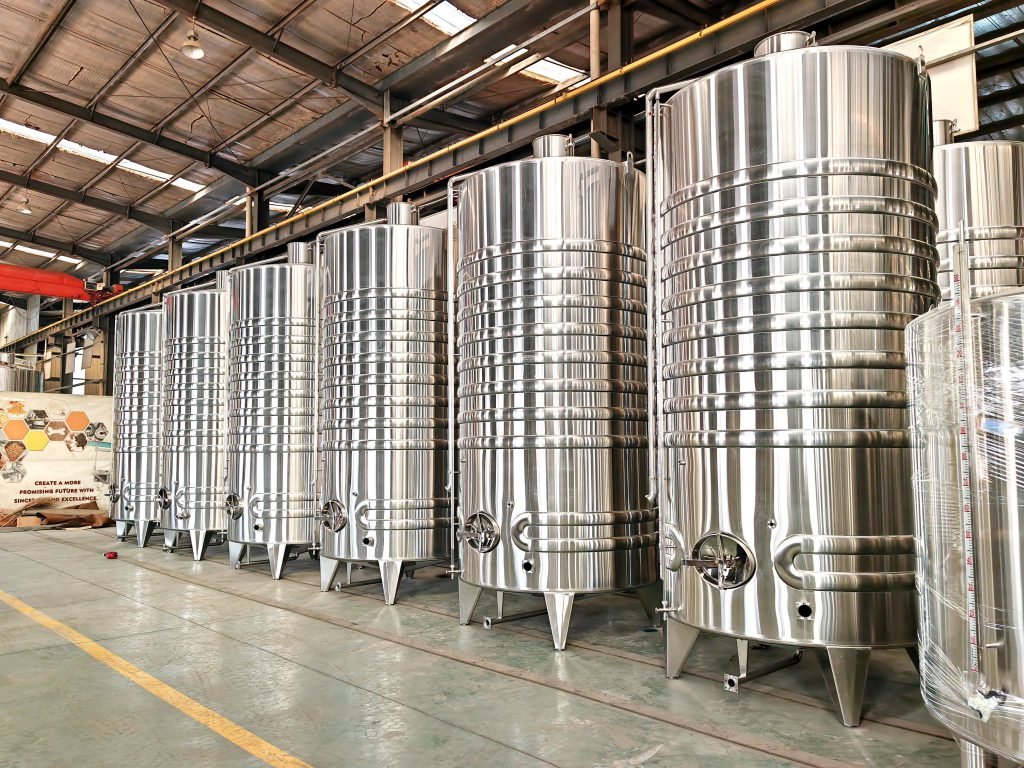
Professional Equipment Solutions
Successful cider production requires appropriate equipment matching production scale and quality
objectives. Professional equipment solutions from Shandong Chenma Machinery Co., Ltd.
provide the foundation for consistent, high-quality cider production.
Fermentation Tank Selection
Choosing appropriate fermentation vessels is crucial for optimal cider production. Key considerations
include:
- Material construction (stainless steel preferred)
- Capacity matching production needs
- Temperature control capabilities
- Cleaning and sanitization features
- Pressure rating for carbonated products
Our commercial cider fermenters
incorporate advanced design features specifically optimized for apple fermentation, including precise
temperature control, integrated sampling ports, and efficient CIP (Clean-in-Place) systems.
Tank Configuration Options
Conical Bottom Fermenters
Conical bottom designs facilitate easy lees removal and improve clarity:
- Efficient sediment collection
- Simplified transfer operations
- Reduced oxygen exposure during racking
- Enhanced yeast management capabilities
Variable Capacity Tanks
Variable capacity systems accommodate different batch sizes while minimizing headspace oxidation.
Benefits include:
- Flexible production planning
- Reduced product loss
- Optimal oxygen control
- Efficient facility utilization
Supporting Equipment
| Equipment Type | Function | Capacity Range | Key Features |
|---|---|---|---|
| Primary Fermenters | Initial fermentation | 500L-10,000L | Temperature control, sampling ports |
| Conditioning Tanks | Secondary fermentation | 500L-5,000L | Pressure rating, carbonation stones |
| Bright Tanks | Final conditioning | 1,000L-20,000L | High polish, transfer systems |
| Storage Tanks | Finished product holding | 2,000L-50,000L | Insulation, level indicators |
Quality Assurance Features
Professional cider production equipment should incorporate:
- Sanitary design: Smooth surfaces, minimal dead zones
- Material certification: Food-grade stainless steel construction
- Pressure testing: Verified pressure ratings and safety systems
- Documentation: Complete material traceability and compliance certificates
Custom Solutions
At Chenma Machinery, our experienced engineering team designs custom solutions tailored
to specific production requirements. Our comprehensive services include:
- Process design and optimization
- Equipment manufacturing and testing
- Installation and commissioning support
- Technical training and ongoing support
Our 20,000 m² production facility houses state-of-the-art manufacturing equipment capable of producing
even the most technically demanding designs. With over 200 professionals dedicated to stainless steel
tank manufacturing, we ensure every project meets the highest quality standards.
Compliance and Certification
All Chenma products are manufactured according to international safety and quality standards:
- ISO9001-2005 quality system certification
- ISO14001-2015 environmental management system certification
- OHSAS18001-2007 occupational health management system certification
- EU CE certification
For more information about our cider fermentation solutions
or to discuss your specific project requirements, contact our technical team.
Contact Information
For professional cider production equipment and technical consultation, Shandong Chenma Machinery
Co., Ltd. provides comprehensive solutions from design to installation. Our experienced
team specializes in fermentation equipment research, manufacturing, and technical services for the
alcohol and beverage industries.
Get in Touch
- Company: Shandong Chenma Machinery Co., Ltd.
- Address: Pingyuan County Economic Development Zone, Dezhou City, Shandong
Province, China - WhatsApp: +86 180 6342 1809
- Email: admin@sdchenma.com
- Website: https://sdchenma.com
Why Choose Chenma?
- Over 200 professionals dedicated to stainless steel tank manufacturing
- 20,000 m² state-of-the-art production facility
- Complete turnkey project solutions from design to commissioning
- International certifications: ISO9001, ISO14001, OHSAS18001, EU CE
- Custom engineering for unique production requirements
- Comprehensive technical training and ongoing support

